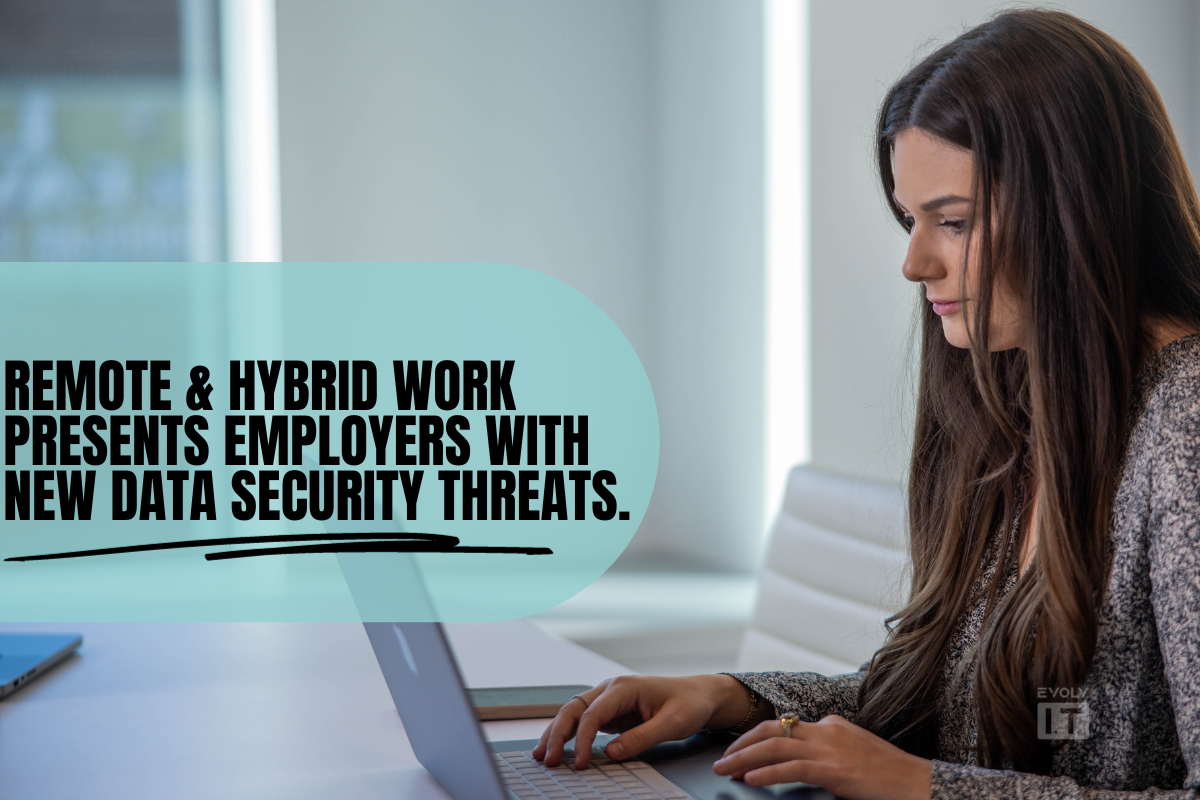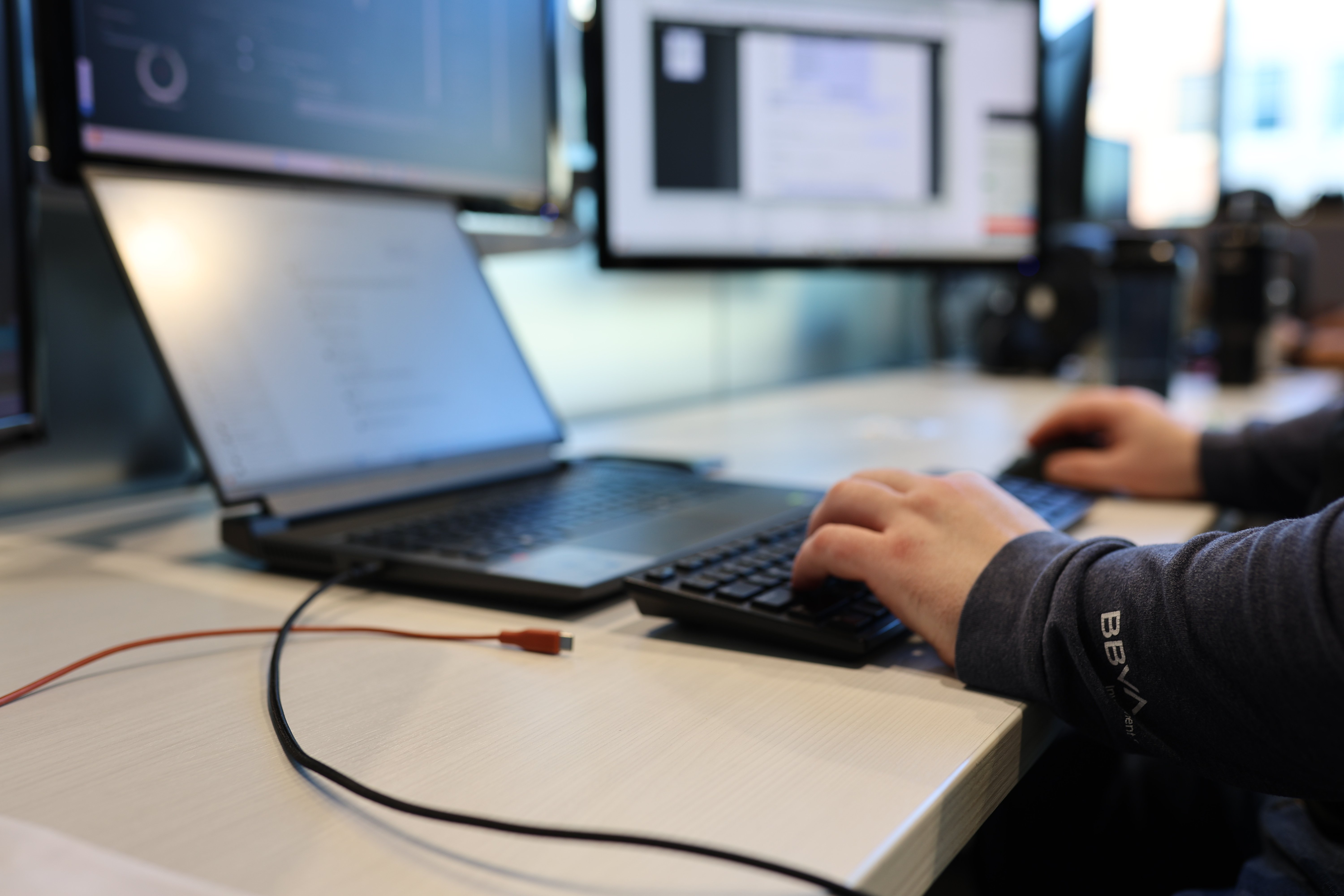3 min read - 1 Oct, 2024
The Perils of Outdated Equipment: Risks to Business Operations
In the fast-paced landscape of today's business world, the importance of keeping...
Read Blog
Although many employees returned to the office after the COVID-19 lockdown, the work-from-home model remains part of the business landscape. As of 2023, 12.7% of full-time employees work remotely while 28.2% work a hybrid schedule. This workplace evolution presents employers with new data security threats, as the entry points for cybercriminals to infiltrate company networks have increased.

Why COVID-19 left companies unprotected from attacks
Like many security threats, the impact of COVID-19 impacted businesses quickly, without warning. Businesses swiftly scrambled to set up completely new operational structures as employees transitioned to working from home. Without the time to plan for the adjustment, leaders inevitably skipped cultivating crucial protocols for keeping their company’s technology fortified. The abrupt nature of the remote work transition left little time for employees to be properly trained on safely navigating a remote work environment, further exacerbating cybersecurity weaknesses.
As a result, many businesses still have gaps in their data security that cybercriminals are exploiting by leveraging viruses, malware, and ransomware to attack businesses that never fortified their infrastructure and security post the remote transition.
How the remote work environment is impacting cybersecurity
In 20% of organizations, remote workers have caused a security breach. Remote employees must grapple with a rapidly evolving data security landscape, which includes a mix of new threats and well-known risks that are increasing in scale and frequency.
One prevalent issue concerns the security of networks. While a company’s network may be strong, remote workers can cause new security risks due to weak passwords, unpatched devices, and outdated software.
Another remote work challenge is the isolation of team members. At the office, if an employee is in doubt about opening a suspicious email, they can quickly receive guidance. Without strong remote work support, however, employees have no one to turn to. This increases the risk of employees making the wrong choice.
Today’s remote work environment demands every business be proactive and develop a plan that ensures business continuity, computer and network support, and data security.
Why phishing is a particular concern for remote work
Phishing is a prevalent security concern for remote and hybrid workers in particular, with the FBI estimating that it constituted nearly 22% of all cyberattacks in 2021. Employees need to know how to recognize phishing attempts, so they do not inadvertently reveal sensitive information.
It’s important to remember that there are multiple types of phishing. Emails are the most common format, but SMS phishing (“smishing”) is becoming more common, with 76% of organizations being targeted in 2022.
That’s not all, though, cybercriminals can also conduct “vishing” attacks by impersonating customers or reputable companies on the phone. New AI-enhanced voice technology even allows them to impersonate the voices of well-known individuals!
Traditional landline telephone services are generally trustworthy because they terminate in physical locations known to the telephone company and associated with a specific customer account.
Cell phones present a different kind of threat, however. Unlike traditional landlines, cell phone numbers can be spoofed more effortlessly, and the widespread adoption of mobile devices amplifies the reach and potential success of vishing attacks, making the landscape significantly more perilous for unsuspecting individuals and organizations.
Spear phishing is another threat that involves attackers performing research on their targets, and then leveraging detailed information about employees to craft convincing, deceptive messages, exploiting the trust and usual communication channels within a company.
The absence of in-person interactions in remote settings can heighten these risks, making it important that organizations cultivate cybersecurity awareness and provide training to employees on how to recognize and report such phishing attempts. Doing so can ensure the continuity and security of business operations.
Phishing attacks are becoming more manipulative and effective over time. In a study analyzing 50 billion emails across 3.5 million mailboxes, researchers found nearly 30 million spear-phishing emails. Despite constituting less than 0.1% of all emails sent, these spear-phishing attempts pose a severe threat potential by accounting for 66% of all breaches.
To increase company cybersecurity, it’s crucial remote workers be aware of how to recognize and avoid these phishing attempts, as they are specifically targeted by cybercriminals.
How a business can strengthen its computer and network support or remote workers

1. Establish a secure Virtual Private Network (VPN)
Organizations can’t control where and when remote workers interact with business assets. If a remote worker logs in through a spoofed public Wi-Fi network, they may accidentally end up sharing their login credentials with a nearby hacker. From that point, a data breach is practically guaranteed.
Organizations that require remote workers to connect to their network through a VPN enjoy secure connection that hackers can’t intercept. Encrypted VPNs prevent attackers from stealing login credentials and sensitive data, even when shared on unsecured connections in airports, coffee shops, and other public places.
2. Enable Multi-Factor Authentication (MFA)
This is one of the simplest and most effective solutions a security leader can implement. One study estimates that MFA blocks 99.9% of automated cyberattacks. It is much harder for a cybercriminal to access company accounts or applications when they need an additional confirmation code to verify their identity.
Keep in mind that some MFA solutions are more secure than others, though. Avoid sending MFA confirmation codes through SMS, because it’s surprisingly easy to hack the 30-year-old signaling system mobile phone networks use to send text messages. Instead, opt for a secure authenticator app from a well-known security vendor.
3. Maximize endpoint security
Never assume that any device, especially one located off-site, is protected. At a minimum, require that every team member guards their device with company-approved antivirus software and regularly updates it with the latest security patches.
With 300,000 new malware variants created every day, no business can afford for any computer, phone, or tablet to be vulnerable. Security policies should include comprehensive response playbooks for quarantining compromised endpoint devices and addressing ongoing threats.
4. Employee Security Awareness Training
Employee training and education are key for a robust cybersecurity framework. The transition to home-based work environments has dissolved the traditional security perimeter, making every remote workstation a potential point of entry for cyber adversaries. Organizations should invest in comprehensive cybersecurity training programs to educate employees on threats such as phishing, smishing, and vishing, and the best practices to thwart them.
This education should cover the responsible use of corporate resources, recognition and reporting of suspicious activities, and adherence to data privacy policies. Education should include the simulation of real-world cyber threat scenarios to test and reinforce the employees' understanding and responses to potential threats.
The objective is to highlight the importance of cybersecurity vigilance so that employees remain the first line of defense against cyber adversaries, whether they are at home or in the office.
5. Establish clear data governance policies
The way your organization handles data is an extremely important part of its overall security posture. In fact, in September 2023 the National Institute of Standards and Technology announced that data governance will become the newest pillar of its celebrated cybersecurity framework.
This means security leaders can’t assume employees will understand the difference between data in the office and data at home. You’ll need to establish clear policies for business continuity by communicating guidelines for how employees should handle company data in every work environment. Everyone should understand the importance of not mixing personal and professional data.
6. Conduct regular security audits
Digital security can be compared to a house: it may be strong initially, but over time, its walls can wear away, often without the inhabitants realizing it. When a disaster strikes, they may be unprepared for the consequences.
Regular security audits and assessments enable security teams to identify vulnerabilities and weak points in the work environment. This can include previously unknown vulnerabilities associated with remote workers, like sending data over unsecured public Wi-Fi. Be proactive about addressing these issues and creating policies that cover them.
7. Create an Incident Response Plan
Cybersecurity is like a game of chess. If you think ten moves ahead and create a framework for computer and network support in the event of a cybersecurity incident, you’ll be well prepared for it when it happens.
On the other hand, if you don’t prepare ahead of time, cybercriminals may attack when you least expect it. You might find yourself moving from one crisis to another and never getting a chance to build a proactive security posture that produces results.
Develop a comprehensive plan for responding and train your team. If a threat surfaces, they will immediately know how to leverage crucial seconds to handle it effectively.
8. Strengthen the security of the Cloud
The cloud delivers computing services over the Internet and is an integral part of most companies. This makes it a prime target for attackers. Even Facebook and LinkedIn haven’t been immune to attacks, as both companies have been breached.
Ensure secure access to cloud assets with strong authentication and encryption, and don’t forget to conduct periodic reviews and audits. It’s especially important that your cloud infrastructure benefits from security tools designed to work in cloud environments – not just any security tool will do.
9. Clarify policies for remote work
Every remote team member must understand their responsibilities regarding cybersecurity. Create one convenient place for them to be accessed and designate a point person to answer any questions and handle issues. It is essential that companies focus on providing remote work support, which ensures the continuity of your business and lessens the risk of cyberattacks.
10. Replace legacy security products that weren’t designed for remote work
Remote work is still relatively new for many organizations. Your tech stack may not grant the visibility you need to actually secure remote connections coming in from multiple places around the world. If this is the case for your organization, you’ll have to replace those obsolete security tools with new ones that can address today’s risk environment.
This is especially true when it comes to automated detection and response tools. If your security tools automatically block connections and terminate processes based on IP address and geolocation data, it practically guarantees a high number of false positives cluttering up your security processes. This drags down security productivity and damages the user experience for legitimate customers (and employees!)
How Evolv I.T. can help businesses strengthen their cybersecurity for remote workers
While many employees have returned to the office, the hybrid and work-from-home models are permanent. Now is the time to take proactive steps to get ahead of attackers and protect your business.
Evolv I.T. offers 24/7/365 remote and on-site support for cybersecurity protection to keep your organization ahead of evolving threats. Through network inspections, non-stop monitoring, threat detections, employee malware resistance training, and comprehensive protection plans, Evolv I.T. ensures that your systems and data have air-tight protection.
You don’t have to go at it alone. We will help you prepare for the unexpected in this new business landscape by monitoring and anticipating risks even as we build cybersecurity and natural disaster recovery into your technology infrastructure and train your employees in cybersecurity awareness.
Schedule a free Discovery meeting to learn how Evolv I.T. can help your business be ready for anything, no matter where your employees work.

3 min read - 1 Oct, 2024
In the fast-paced landscape of today's business world, the importance of keeping...
Read Blog
10 min read - 1 Oct, 2024
In just eight years, Evolv I.T. has become a top-rated Technology Managed Service...
Read Blog